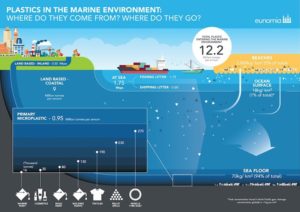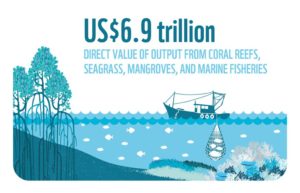If you were to ask me a year ago what I thought would be trending a year later, plastic straws definitely would not have been on my list.
I’d like to consider myself an advocate for sustainability: I’m vegan, I recycle and I try to repurpose items. Until recently, I had never considered that plastic straws — a commodity that’s unquestionably been available since the 1960s — placed any strain on the environment, businesses or the economy at large.
Well, turns out the impact of plastic straws, though present, is not nearly as severe as many hyped it up to be. With eight millions tons of plastic streaming into the ocean annually, straws only comprise 0.025 percent of that waste, according to National Geographic. The small-scale issue went mainstream this summer when Seattle — home of Starbucks and its famous plastic green straws — announced a ban on plastic straws and utensils at all food service businesses.
From there, the issue blew up on social media, with many claiming to be dedicated environmentalists because they now abstained from plastic straws. As Greenpeace has pointed out, however, 40 percent of plastics in the ocean are from single-use plastics, with plastic straws only making up a tiny fraction. According to Vox, The World Economic Forum reported that there are 150 million metric tons of plastic in the ocean, and scientists predict that by staying with this trend, there will be more plastic than fish in the ocean by 2050. As someone who comes from a coastal area where seafood is a huge market, that doesn’t sound like the best situation to be in.

Where plastic pollution sources from. Source: EcoWatch
So why focus on plastic straws at all? In the Business Insider video “Why plastic straws suck,” chief scientist for the Ocean Conservancy George Leonard notes how plastic straws are only the beginning.
“I think straws are a bit of a poster child here for the bigger question of society’s kind of over-reliance on single-use plastics and the fact that a lot of the stuff is ending up in our marine environment,” Leonard said.
Biodegradable paper straws, which are slightly more expensive, have been introduced as an eco-friendly alternative to plastic straws, which can take 500 years to decompose, according to The Independent. Aardvark Straws, a paper straw manufacturer, has been a key player with introducing this change. When pulling up the company’s website, a banner at the top reads that overwhelming demand for paper straws has delayed shipping times, illustrating how consumers are eager to change their plastic usage. David Rhodes, Aardvark Straws’ global business director, told National Geographic that the economic value of paper versus plastic straws extends beyond business expenses.
“There’s no getting around that a paper straw will cost about a penny more than a plastic straw,” Rhodes said. “For large corporations, that equals hundreds of millions of dollars, but the cost to the marine environment, you can’t put a price on that.”

Aardvark Straws at work. Source: Imbibe
CNBC reported that paper straws cost 2 ½ cents each, as opposed to half-cent for plastic straws.
“You go from something that is very, very, very cheap, to something that is still actually cheap,” said Adam Merran, CEO of PacknWood, a food service products company, to CNBC.
That’s where the economics of plastic straws come in to play: changing drinking straw habits may affect business expenses, but the ultimate economic value comes with protecting the priceless marine environment in the long run.
According to the World Wildlife Fund, the direct output from coral reefs, seagrass, mangroves and marine fisheries is valued at $6.9 trillion U.S. dollars. Clearly, investing in eco-friendly habits now — even if they come at a higher cost — will allow natural resources to maintain (or potentially increase) their value in the future, which is beneficial to everyone.

Source: The World Wildlife Fund
Remember: plastic straws are only the beginning to revolutionizing consumers’ environmental and economic goals.
Leave a Reply
You must be logged in to post a comment.